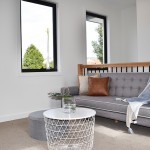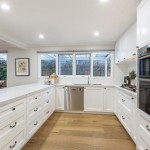Whether you’re starting up a new business or you’re simply wondering whether it’s time to spruce up your existing establishment, it goes without saying that interior design is particularly important in the restaurant and café industry. The ultimate goal for any restauranteur is to serve good food and drink in a space that makes its customers feel happy, relaxed, and comfortable. We’ve collected our top design tips for restaurant and café owners to help you elevate your business above your competitors.
1. Decide on a theme, atmosphere, or ambience
The way that you design your establishment should be driven by the environment, atmosphere, or ambience you wish to create. It’s a good idea, then, to establish your vision for your restaurant or café before you begin designing its layout and interiors. Do you want it to feel airy and open, or do you want it feel cosy and intimate? Are you aiming to achieve a casual and relaxed atmosphere, or a more formal and sophisticated one? The way that you answer these questions will allow you to make aesthetic decisions that are ultimately cohesive with your restaurant or café’s intentions.
2. Don’t sacrifice comfort and functionality for the sake of revenue maximisation
Your restaurant or café space should ideally maximise revenue by being capable of catering for high volumes of customers. However, this should never come at the expense of comfort and functionality. It may be tempting to try to squeeze in as many tables as possible but realistically, this will just result in an overcrowded restaurant–one which will likely make customers feel uncomfortable and one which will likely make it difficult for your staff to perform their tasks efficiently. At the end of the day, even if your restaurant or café can fit in heaps of people, if the space and the service feels chaotic and overcrowded, customers won’t want to return. A good rule of thumb is leaving a least 1 metre between tables– but 1.2 metres is a more comfortable distance, and when designing for wheelchair access, an allowance of 1.5 metres or more is best.
3. Optimise your floor space
Design your floor space to maximise the speed and efficiency of your staff. The ultimate goal should be to make your space ergonomic so that you can reduce the distance and effort required for your staff to work efficiently. You can eliminate the risk of bottlenecks by creating intuitive lanes for your waiters and waitresses to walk through. Your space should allow your staff to move between the tables, the kitchen, and the tills with ease.
Also be sure to consider any ancillary spaces in your restaurant or café, too. For example, if you envision a lot of takeaway orders, you should include a waiting area so that your customers waiting for their orders don’t begin to clog up the serving areas. By creating a designated waiting area, you can be sure that the main dining area will continue to function at optimal levels.
A good way to test the functionality and efficiency of your space is by taping the layout on the floor with masking tape and performing a mock service. During this trial, you’ll be able to analyse and assess how optimal the layout would be under service conditions, and make adjustments as necessary.
4. Stimulate the appetite through strategic colour coding
It may sound ridiculous, but colour can actually play an important part in subconsciously influencing consumer decision-making, all the way from their food choices to the amount of money they end up spending. There have been a number of scientific studies that have suggested that colour may be used as a strategic tool in influencing customers’ choices. According to The Restaurant Times,:
- Blue and purple should be avoided in eateries as they tend to curb the appetite.
- Red and yellow are the best colours for fast food restaurants as they tend to generate excited responses from customers, causing them to eat quickly and to leave quickly. (McDonalds, Hungry Jacks, KFC, and Red Rooster are all examples of this.)
- Green is best suited for healthy restaurants as the colour is unsurprisingly associated with health. Using this colour helps to advertise the fact that the food being served is healthy and fresh.
- Warm, earthy tones such as maroon, dark orange and brown tend to appeal to the appetite and also tend to make the customer want to stay longer.
- Light colours such as white, beige, and light grey tend to make customers feel relaxed and comfortable.
5. Establish a variety of seating options
If all your seating looks exactly the same, your dining space can look boring and monotonous. Instead, think about the possibility of including a variety of seating options to better cater for the different groups your restaurant or café will inevitably deal with on a regular basis. For example, if your space allows for it, consider installing booths along the walls and larger tables in the centre of the restaurant or café. The booths can cater for smaller groups of people, whilst the tables in the middle can easily accomodate for larger groups. By offering a variety of seating options, your space will look visually engaging and will provide for adaptability.
Here at Alic, we’re always available to take your enquiries regarding any project. We’ve had many years of experience in the hospitality industry and would love to be involved in your upcoming project. Contact us at any point to discuss your plans.


